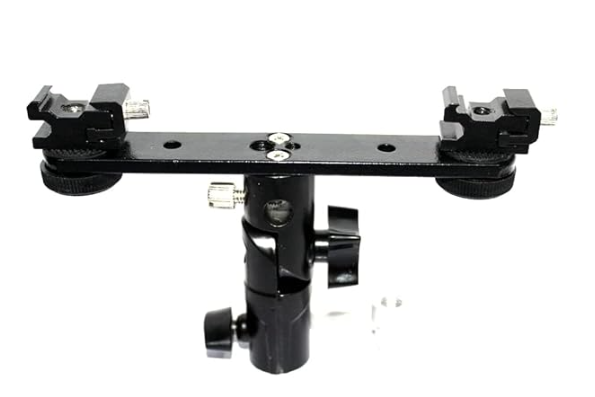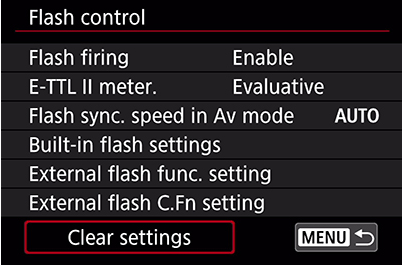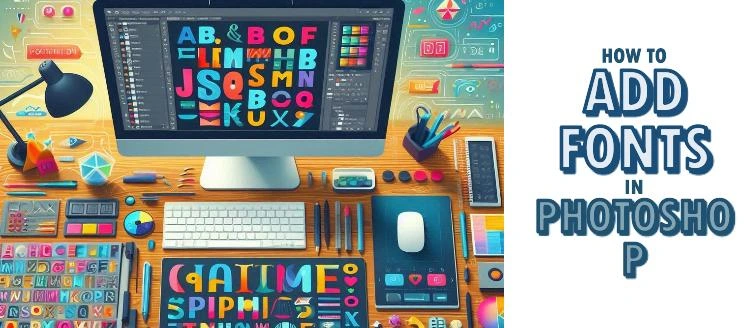Theodore Lowe, Ap #867-859
Sit Rd, Azusa New York
Find us here
Easy Setups for Speedlight Photography

From understanding the basics of speedlight settings to exploring creative lighting setups, we will cover everything you need to know to make the most of your speedlight. Whether you are a beginner or an experienced photographer, these tips will help you elevate your photography skills and capture stunning images.
So, let's dive in and learn how to optimize your speedlight setup for achieving professional-looking photographs.
Choosing the Right Speedlight
Understanding the Different Types of Speedlight
When choosing a Speedlight for your photography, it's important to understand the different types available. Speedlight come in various sizes, power outputs, and features, each serving specific purposes. The most common types are compact speedlights, which are small and portable, and studio-type speedlights, which are more powerful and versatile.
Factors To Consider When Choosing A Speedlight
- Compatibility: Ensure that the speedlight is compatible with your camera model to avoid any technical issues.
- Power output: Consider the power output of the speedlight to ensure it meets your photography needs, especially for outdoor or studio shooting.
- Wireless capabilities: Look for speedlights with wireless triggering capabilities for added flexibility and convenience during shoots.
- Additional features: Think about any additional features you might need, such as High-Speed Sync (HSS) or TTL capabilities, which can enhance your photography experience.
Essential Accessories for Speedlight Photography
When it comes to Speedlight or flash photography, having the right accessories can make a world of difference in the quality of your images. These essential accessories help you shape, diffuse, and position the light for more professional-looking results. In this article, we'll explore the must-have accessories that will take your Speedlight photography to the next level.
Light Modifiers for Shaping and Diffusing Light

Light modifiers are essential tools for controlling and shaping the light from your Speedlight to achieve the desired effect. Whether you want a softer, more diffused light or a more directional and focused beam, light modifiers can help you achieve it. Some popular light modifiers include:
- Soft boxes: These large, fabric boxes with reflective interiors soften the light and create beautifully diffused light. They come in various sizes and shapes to suit different shooting scenarios.
- Umbrellas: Umbrellas are versatile and cost-effective light modifiers. They can be used to bounce or shoot through the light, providing a different quality of light depending on the type and color of the umbrella.
- Snoots and grids: Snoots and grids are ideal for creating a narrow and focused beam of light. They are great for highlighting specific subjects or adding drama to your images.
- Beauty dishes: Beauty dishes produce a soft, even light with a slight contrast, perfect for portrait photography. They create a circular catch light in the subject's eyes, adding dimension to the image.
Remote Triggers For Off-camera Flash

Remote triggers allow you to take your Speedlight off-camera, opening up a world of creative possibilities. By placing the flash in different positions, you can achieve more dynamic lighting effects and eliminate harsh shadows. Some popular remote triggers include:
- Radio triggers: Radio triggers use radio frequencies to wirelessly communicate between your camera and Speedlight. They offer a reliable and extended range, making them suitable for various shooting scenarios.
- Infrared triggers: Infrared triggers use infrared signals to wirelessly trigger your off-camera flash. While they have a shorter range compared to radio triggers, they are often more affordable and work well in line-of-sight situations.
- Lightning triggers: Lightning triggers are a specialized type of remote trigger that detects the lightning strike and automatically triggers your Speedlight. They are commonly used in capturing lightning bolts and other fast-paced events.
Light Stands and Brackets for Positioning The Speedlight

Light stands and brackets are essential for securely positioning your Speedlight in the desired location. They help you maintain stability and control over the light source, ensuring consistent results. Some options for light stands and brackets include:
- Light stands: Light stands come in various sizes and designs to accommodate different shooting needs. Look for a sturdy stand that allows for easy height adjustments and has a stable base to prevent accidental tipping.
- Hot shoe brackets: Hot shoe brackets attach to your camera's hot shoe and provide a platform for mounting your Speedlight. They often feature adjustable arms or swiveling heads to help you achieve the desired angle.
- Boom arms: Boom arms allow you to position your Speedlight overhead or to the side, adding creative lighting angles to your shots. They are especially useful for portrait and product photography.
By investing in these essential accessories for Speedlight photography, you can take your images to the next level. Experiment with different light modifiers, remote triggers, and positioning options to unleash your creativity and capture stunning photographs.
Setting Up Your Speedlight
Learn how to effortlessly set up your Speedlight for stunning photography results. Elevate your images to a whole new level with easy-to-follow setups that will enhance your creativity and capture captivating shots.
Setting up your Speedlight correctly is essential to ensure you capture stunning images that stand out from the crowd. With a few simple adjustments, you can take your photography to the next level. In this section, we will explore two crucial aspects of setting up your Speedlight: adjusting the power and zoom settings, and understanding the various flash modes. Let's dive in and learn how to master your Speedlight for amazing results.
Adjusting the Power And Zoom Settings

When it comes to Speedlight photography, adjusting the power and zoom settings is crucial for achieving the right exposure and focus. The power setting allows you to control the intensity of the flash, while the zoom setting helps you control the spread of light. Here's how you can adjust these settings to get the perfect shot: 1. Power Setting: Start by setting the power to full and take a test shot. If the image is overexposed, decrease the power until you achieve the desired exposure. If it's underexposed, increase the power accordingly. 2. Zoom Setting: The zoom setting determines the angle of coverage of your flash. If you're shooting a subject up close, use a wider angle (e.g., 24mm) to cover more area. For subjects at a distance, a narrower angle (e.g., 105mm) provides a more concentrated and focused light. Experiment with different zoom settings to see which works best for your shot. Remember, every lighting situation is unique, so don't be afraid to experiment and adjust the power and zoom settings until you achieve the desired look.
Understanding the Various Flash Modes

Now that you have grasped the basics of adjusting the power and zoom settings let's dive into understanding the various flash modes. These modes allow you to adapt to different shooting scenarios and add creative flair to your images. Here are the main flash modes you need to know: 1. TTL (Through-The-Lens) Mode: This mode automatically measures the flash output based on the camera's metering system, ensuring a well-exposed image in most situations. It's a great mode to start with when you are just beginning with Speedlight photography. 2. Manual Mode: In this mode, you have complete control over the flash output, allowing you to fine-tune the lighting for your specific needs. It's perfect for situations where you want more control, such as studio setups or when using off-camera flash. 3. High-Speed Sync (HSS) Mode: This mode is useful when you need to use a higher shutter speed than your camera's sync speed. It enables you to freeze motion and control ambient light even in bright conditions. 4. Wireless or Slave Mode: This mode allows you to use your Speedlight off-camera, triggered by another flash or a wireless trigger. It opens up endless creative possibilities, enabling you to create beautiful lighting setups and experiment with different angles. As you gain more experience in Speedlight photography, you can explore these flash modes to enhance your images and achieve the desired lighting effects. Mastering the power and zoom settings, along with understanding the various flash modes, will take your Speedlight photography to the next level. So, grab your Speedlight and start experimenting with different setups to unleash your creativity and capture stunning images like never before.
Mastering Flash Techniques
When it comes to taking your speedlight photography to the next level, mastering flash techniques is essential. By understanding how to manipulate and control your speedlight, you can achieve professional-quality lighting results that enhance your images significantly. Here are some easy setups and techniques to master flash photography:
Bouncing The Flash For Softer Lighting
Utilizing the technique of bouncing the flash off a surface such as a ceiling or wall can create softer, more diffused lighting. This helps to reduce harsh shadows and produces a more natural and flattering effect on your subjects. By positioning the speedlight and adjusting the angle, you can achieve the desired soft lighting that enhances your images.
Using Flash Gels For Creative Effects
Flash gels allow you to add creative and colorful effects to your speedlight photography. By placing a colored gel over the flash, you can change the color temperature of the light, creating a unique atmosphere and mood in your images. Experimenting with different colored gels opens up an array of creative possibilities for your photography.
Creating Dramatic Lighting With Multiple Speedlights
Another advanced technique for mastering flash photography involves using multiple speedlights to create dramatic and dynamic lighting effects. By strategically positioning and controlling multiple speedlights, you can sculpt and shape the light to add depth and dimension to your images. This technique allows you to control the highlights and shadows, resulting in captivating and professional-looking photographs.
Conclusion
Speedlight photography can significantly elevate the quality of your images. By mastering easy setups and techniques, you can take your photography to the next level. Experiment with different light angles, modifiers, and gels to create stunning effects. Keep practicing and exploring new methods to continuously improve your photography skills.
Related blog posts
How to Add Fonts in Photoshop: A Step-by-Step Guide
Are you ready to give your designs a unique twist? Adding new fonts in Photoshop can instantly elevate your creative projects, making them stand out with style and personality.


